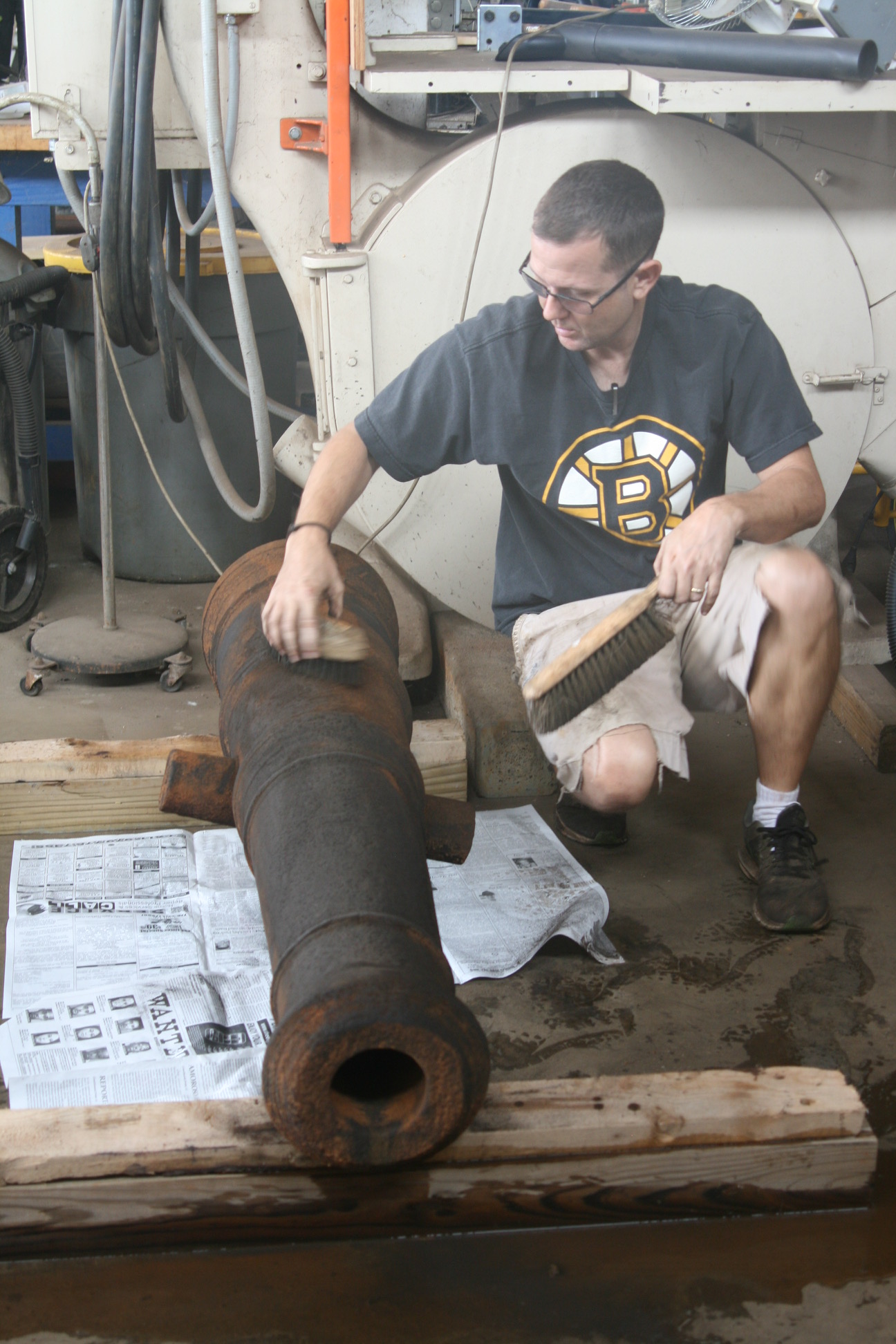The other day, scrolling through Twitter, we came across a picture of two cannons from the Alamo laid out in the bed of a pickup truck, parked outside of a Buc-ee’s. We wondered why these cannons were on a road trip. Turns out it’s part of a restoration project being conducted by the Alamo and Texas A&M University’s Conservation Laboratory.
In the 180 years since several of the cannons were used at the siege of the Alamo, they’ve been painted many times in an attempt to keep the guns from rusting. But paint is not forever, and it does nothing to eliminate the original corrosion underneath.
“Iron in its happiest state is rust,” says research associate Jim Jobling, who is part of the restoration effort.
The A&M team will remove the layers of paint, seal the iron with a corrosion inhibitor and repaint the cannons. Jobling says the restoration job will last for 15 to 20 years.
Seven of the nine cannons in the Alamo’s collection date from the 1836 battle between Texans seeking independence, and the Mexican Army, Jobling says. Two others were added to the collection later.
Of the cannons the restoration team is cleaning, one is a Spanish cannon used by the Mexican Army that was later partially dismantled and filled with dirt and debris. The 1842 Rio Grande Cannon was brought to Texas sometime in the late 1830s.
“It wasn’t at the Battle of the Alamo, but it was donated, sometime early 1900s to the Alamo,” Jobling says.
When the restoration team removed dirt and debris from one cannon barrel, they found a cannon ball inside.
“It’s kind of neat, because you’re looking at history, and when was the cannonball put there?” Jobling says. “It could have been put there at the Battle of the Alamo, but we don’t know. But we’ve cleaned the artifact, and now we have a little extra piece of history.”
As the cannons are restored, they will be returned to the Alamo. The first two will go on display in February, with more pairs coming later.
Written by Shelly Brisbin.
















